Final Draft – Climate Science Special Report
August 8th, 2017

Here it is, REAL NEWS. This is the Final (5th Order) Climate Science Special Report from the U.S. Global Change Research Program:
Final-Draft-of-the-Climate-Science-Special-Report
Bottom line? First, note that this is an extensively authored and peer reviewed report, with multiple editors, and coordinating, lead, and contributing authors, and review of peer reviewed articles and journals. They take great care in explaining “confidence levels,” pps. 6-10, an issue that Power Line Task Force brought before the PUC and Appellate Court over a decade ago regarding EMF:
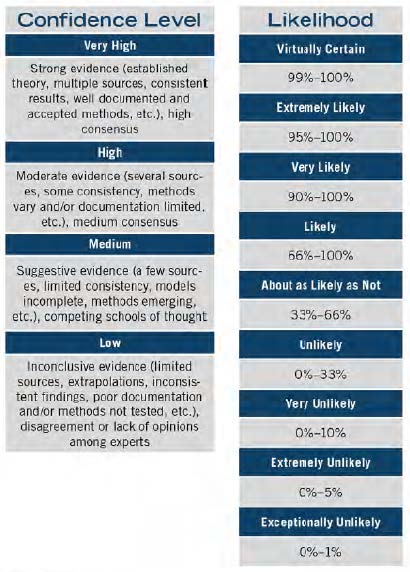
The purpose?

OK, back to the bottom line — the key findings, p. 38-39:
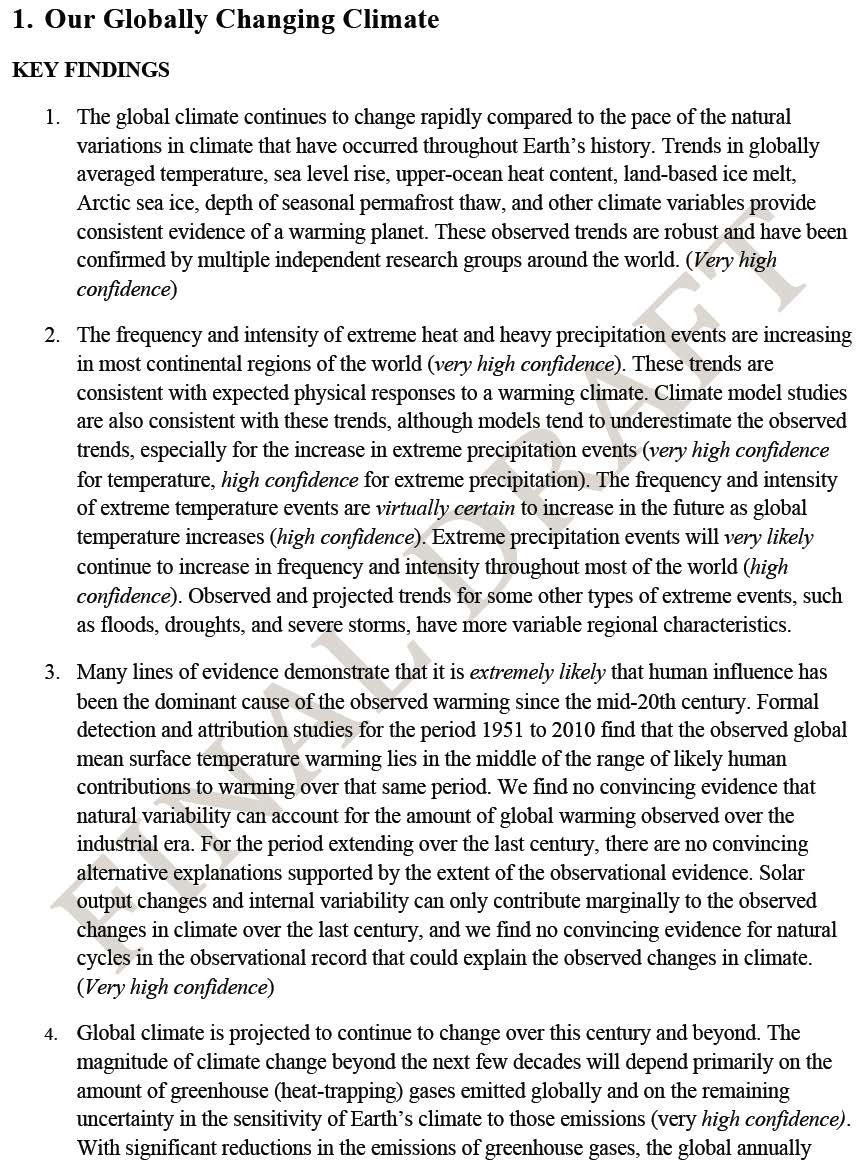

Now, read it, the Executive Summary at least:
DOT considers adding passenger train to Chicago
July 20th, 2017
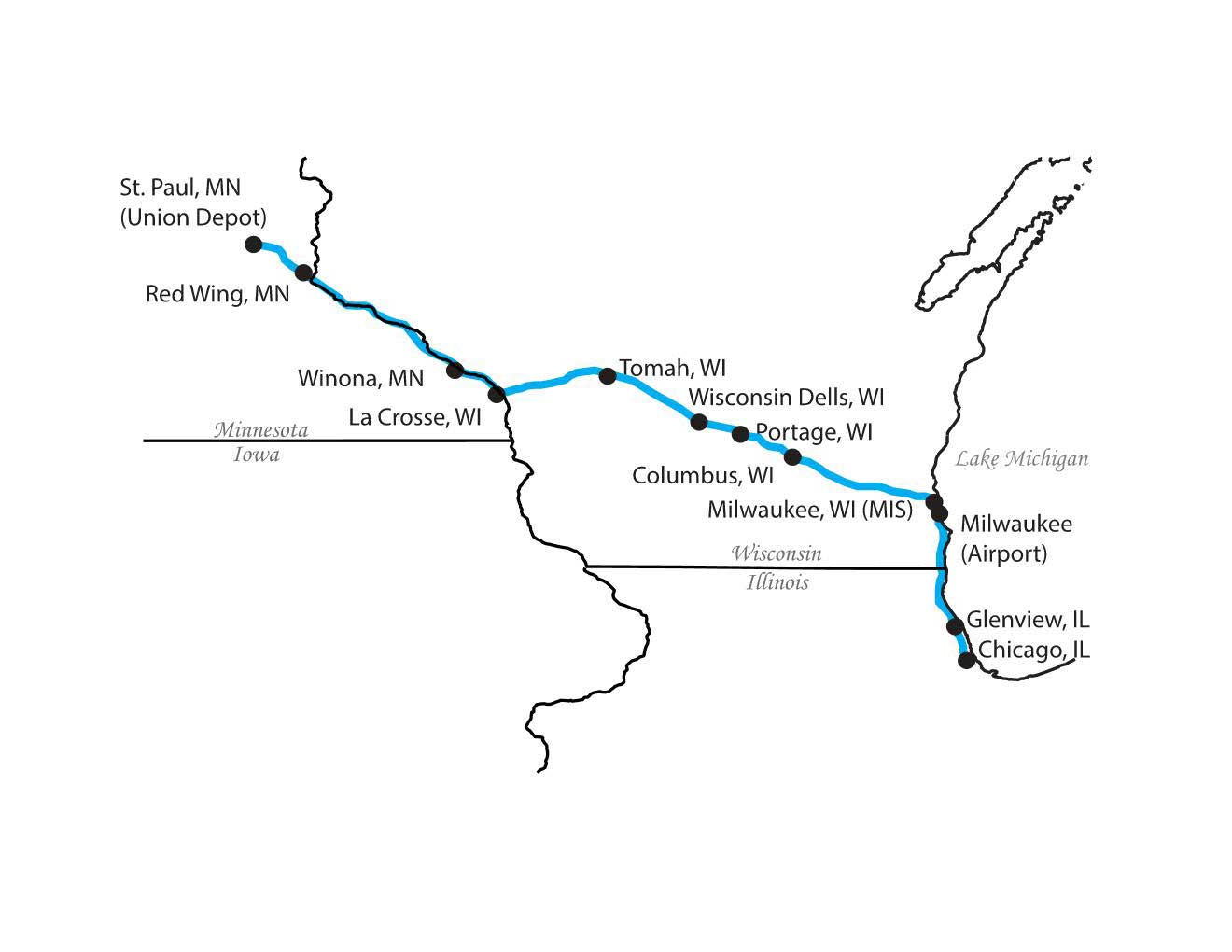
RE: PURPOSE AND NEED MEETINGS — CORRECTION FROM DOT:
CORRECTION: Purpose and Need Statement now available for proposed Twin Cities-Milwaukee-Chicago Intercity Passenger Rail Service
Our mistake! We gave you the wrong public information meeting dates in yesterday’s update. Wisconsin’s meeting is actually first. Correct dates are:
- Sept. 6 at the La Crosse County Administrative Center in Wisconsin
- Sept. 7 at St. Paul’s Union Depot
We wouldn’t want you to miss these important public meetings. Sorry for the confusion.
===============================
There’s been a lot of bruhaha here about the “Zip Rail,” but that’s now “Zip” since the DOT suspended “work” on that project. What’s new is that there’s a specific initiative by the DOT now for adding a 2nd daily passenger train to and from the Twin Cities to Chicago, serving multiple points in between. THIS IS NOT A HIGH SPEED RAIL PROPOSAL, it’s adding another passenger train on the eastern end of the Empire Builder route.
Here’s Amtrak’s 2015 feasibility report (PDF)
And the reports this rail group has generated with DOT:
- Purpose and Need Statement – July 2017 (PDF)
- Second train feasibility study report (PDF)
- Second train feasibility study executive summary and recommendations (PDF)
- Exhibit 2 – station stops and alternate routes (PDF)
- Exhibit 3 – corridor photos set 1 (PDF)
- Exhibit 3 – corridor photos set 2 (PDF)
Meetings seem to be held monthly, but there’s no notice of when the next meeting is on the e“meetings” page, and there are no details of the meetings, agenda, minutes, presentations, etc. See future forum meetings. HA! They’re missing PAST meeting!
Look at the “Public Engagement” and tell me if you see anything about the public, and look at “Membership/Members” and tell me if you see anything other than corporations, governmental and lobbying organizations — WHERE’S THE PUBLIC?
Here’s the “Put Me On The List” link, copied from their page: contact the MnDOT Project Managers or Mary McFarland, MnDOT Communications.
Have at it, and keep an eye out for a Fall 2017 public meeting where the Purpose and Need Statement – July 2017 (PDF) will be presented and discussed (it does not note a formal comment period).
Transmission inefficiency, pipeline pumping stations, now this?
June 29th, 2017
For years, for decades, I’ve been going on and on about the inefficiency of transmission, the electric system, and line losses ad nauseum. Y’all know that, if you’ve been paying attention. And here we are, back to discussing inefficiency in the electric system.
The SW MN 345 kV Transmission Lines (PUC Docket 01-1958) turned on line losses. After that close call, line losses were calculated and considered on a very different model, framing it as a percentage of THE ENTIRE EASTERN INTERCONNECT. So what’s a little loss of 0.1%, who cares… well, as a part of THE ENTIRE EASTERN INTERCONNECT, it adds up fast. Let me make this perfectly clear, transmission line loss is substantial. It’s particularly substantial when you’re talking about using transmission to ship lower capacity energy, like wind and solar. If you have long, hundreds of miles long, transmission lines, there’s not much, if any, of that energy that would find its way to its destination.
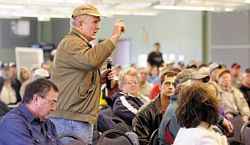
There’s a “Stakeholder Meeting” coming up:
Register here
Those words, “Stakeholder Meeting” get my attention, because just who is a stakeholder, who decides. I don’t recall getting this email, but thankfully a client who is regarded as a “Stakeholder” did, so I’ve signed up and will spend the time to show up and raise a few points.
Upcoming Stakeholder Meeting: Opportunities and Barriers to Utility Infrastructure Efficiency
Friday, July 28th from 8:30 a.m. – 12:30 p.m.
Wilder Center – 451 Lexington Pkwy. N, Saint Paul, MN 55104
Register for this free public meeting
Meeting Details
An estimated 12-15% of the nation’s electricity production is consumed by generation auxiliary loads, transmission and distribution losses, and substation consumption. As such, there is significant potential to increase utility infrastructure efficiency by decreasing conversion losses, improving plant operations, and mitigating transmission and distribution losses throughout Minnesota’s electric grid.
The Minnesota Department of Commerce invites you to participate in a stakeholder meeting to explore opportunities and barriers to utility infrastructure efficiency projects, and to begin developing a framework to improve the overall generation, transmission, and distribution efficiency of Minnesota’s electric system.
Meeting attendees will hear from national and local experts and gain insight into how existing, new, and on-the-horizon utility infrastructure technologies can increase system efficiency, including:
- A presentation by the Electric Power Research Institute, highlighting innovative utility infrastructure efficiency projects and approaches from around the country.
- A presentation from Minnkota Power Cooperative, discussing lessons learned from implementing infrastructure efficiency projects in Minnesota.
- Information about next steps in the stakeholder engagement process, including a deeper-dive examination of supply-side efficiency policy issues.
Register here
Overland’s June LTE in RW Republican Eagle
June 29th, 2017
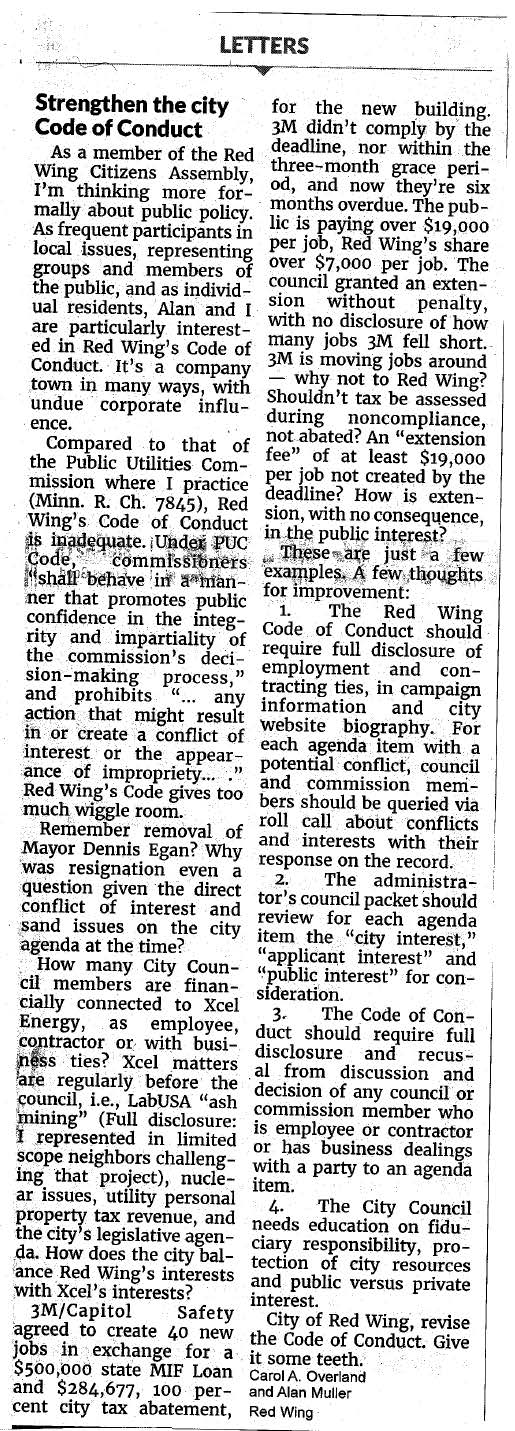
Missouri Supreme Court ends Ameren’s Transmission plan
June 29th, 2017
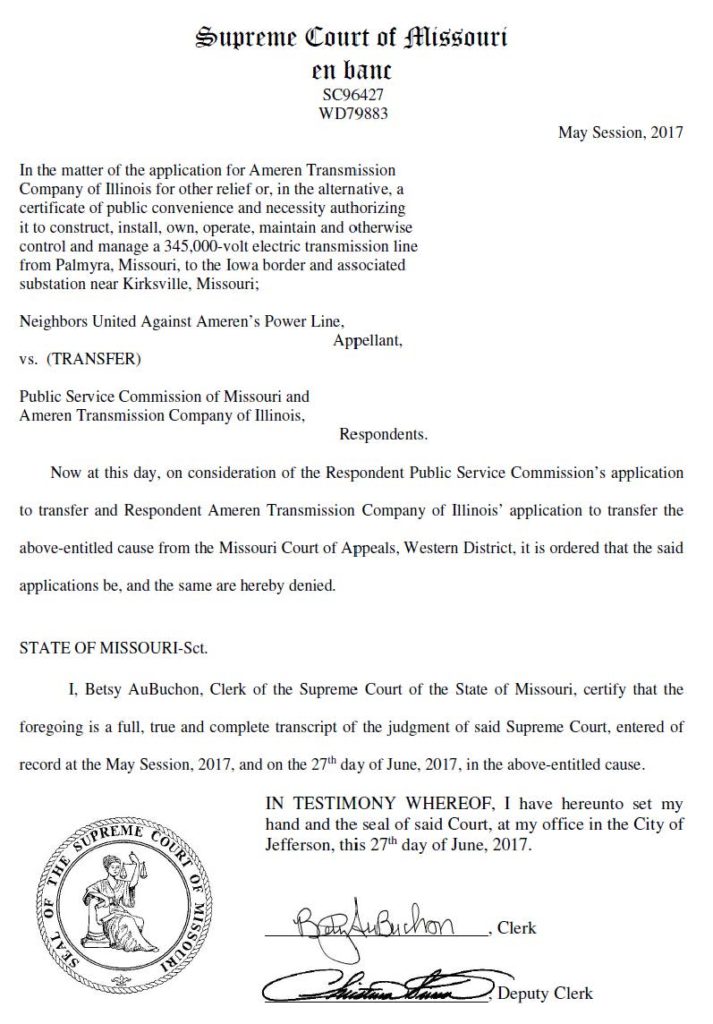 click for larger version
click for larger version
Congratulations to Neighbors United Against Ameren Power Line, and to their attorney, Paul Henry, on this victory against Ameren’s Mark Twain Transmission Project (How dare they name something like this after Mark Twain, he”d be rolling in his grave). The Missouri Supreme Court will not take up the Court of Appeals decision that Missouri does have jurisdiction over Ameren’s transmission project. Here’s the decision from the Court of Appeals:
Ameren claims were bizarre:
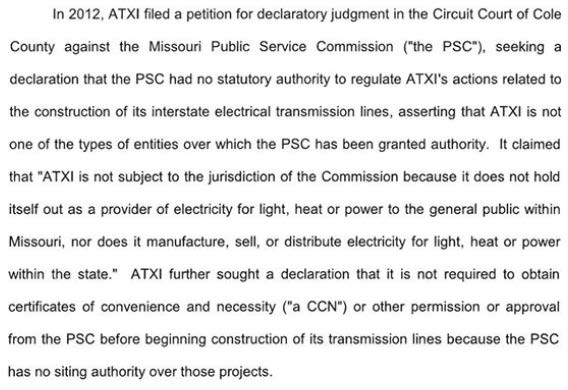
And the Missouri Court said, “We don’t think so.” Ameren tried to get it before theMissouri Supreme Court, and failed.
As recently as April, Ameren was proposing new routes through Missouri. Guess again!

